#mobilereviews
Text
Trending Customer Reviews – Challenge to the eCommerce site

#customerreviews#ecommerce#usergeneratedcontent#reviewmanagement#customerexperience#reviews#onlinereviews#influencermarketing#brandreputation#fakereviews#socialproof#sentimentanalysis#MobileReviews#VideoReviews#ProductFeedback
0 notes
Text
Vivo Y12a vs Vivo Y12s: A Comprehensive Comparison
In the ever-evolving world of smartphones, Vivo has established itself as a reliable brand that consistently delivers high-quality devices. Among its popular models are the Vivo Y12a and Vivo Y12s. These two smartphones are closely related but come with differences that cater to varying user preferences and needs. In this blog, we’ll dive deep into a detailed comparison of the Vivo Y12a and Vivo Y12s, examining their design, display, performance, battery life, camera quality, and more to help you make an informed decision.
1. Design and Build Quality
Both the Vivo Y12a and Vivo Y12s boast sleek designs that are characteristic of modern smartphones. They feature a plastic back with a glossy finish, providing a premium look without the hefty price tag.
Vivo Y12a: Available in Phantom Black and Glacier Blue, the Y12a measures 164.41 x 76.32 x 8.41 mm and weighs 191 grams. Its ergonomic design ensures a comfortable grip, making it easy to handle for prolonged periods.
Vivo Y12s: Slightly older, the Y12s comes in Phantom Black and Glacier Blue as well, with dimensions of 164.41 x 76.32 x 8.41 mm and a weight of 191 grams. It mirrors the Y12a in terms of size and weight, maintaining a consistent feel across both models.
2. Display
The display quality is a crucial aspect of any smartphone, affecting how users interact with their device on a daily basis.
Vivo Y12a: The Y12a features a 6.51-inch IPS LCD with a resolution of 720 x 1600 pixels. The screen-to-body ratio is approximately 81.6%, offering a decent viewing experience with vibrant colors and good brightness levels.
Vivo Y12s: Similarly, the Y12s sports a 6.51-inch IPS LCD with the same resolution of 720 x 1600 pixels. It also shares the same screen-to-body ratio of around 81.6%. Both phones provide identical display specifications, ensuring a consistent visual experience.
3. Performance
Performance is a critical factor, especially for users who multitask or engage in gaming and other resource-intensive activities.
Vivo Y12a: Under the hood, the Y12a is powered by the Qualcomm Snapdragon 439 chipset, coupled with 3GB of RAM. This combination ensures smooth performance for everyday tasks, though it might struggle with high-end gaming and intensive multitasking.
Vivo Y12s: In contrast, the Y12s is equipped with the MediaTek Helio P35 processor. It comes in two variants: one with 3GB of RAM and another with 4GB of RAM. The Helio P35 offers a slight edge over the Snapdragon 439 in terms of performance, especially in the 4GB RAM variant, providing a more seamless experience for users who demand a bit more from their device.
4. Operating System
The operating system can greatly influence the user experience, offering different levels of support, features, and updates.
Vivo Y12a: The Y12a runs on Funtouch OS 11 based on Android 11. This OS version brings new features such as improved privacy settings, chat bubbles, and enhanced performance optimizations.
Vivo Y12s: Initially released with Funtouch OS 11 based on Android 10, the Y12s can be upgraded to Android 11. The difference in the pre-installed OS might not be significant for all users, but the ability to update ensures both phones can leverage the latest Android features.
5. Battery Life
Battery life is a major consideration for users who rely on their phones throughout the day without frequent charging.
Vivo Y12a: The Y12a houses a substantial 5000mAh battery, which is more than capable of providing a full day of use on a single charge. It supports 10W charging, which, while not the fastest, ensures reliable battery replenishment.
Vivo Y12s: Matching the Y12a, the Y12s also features a 5000mAh battery. It supports 10W charging as well, offering a similar level of endurance. Both models are well-suited for users who prioritize long battery life.
6. Camera Quality
For many users, camera performance is a key factor when choosing a smartphone.
Vivo Y12a: The Y12a is equipped with a dual-camera setup, featuring a 13MP primary sensor and a 2MP depth sensor. This combination allows for decent photography, with the depth sensor enabling effective portrait shots. The front camera is an 8MP sensor, suitable for selfies and video calls.
Vivo Y12s: The Y12s shares the same camera setup as the Y12a, with a 13MP primary sensor and a 2MP depth sensor on the rear, and an 8MP front-facing camera. This ensures that users of either model can enjoy similar photographic capabilities.
7. Connectivity and Other Features
Connectivity options and additional features can enhance the overall usability of a smartphone.
Vivo Y12a: The Y12a supports Bluetooth 4.2, dual-band Wi-Fi, and has a microUSB 2.0 port for charging and data transfer. It also features a side-mounted fingerprint sensor for quick and secure unlocking.
Vivo Y12s: The Y12s stands out with Bluetooth 5.0, offering better range and faster data transfer compared to the Y12a. It supports dual-band Wi-Fi and also uses a microUSB 2.0 port. Like the Y12a, it includes a side-mounted fingerprint sensor.
8. Price and Availability
Price is often a deciding factor for many consumers, especially in the budget and mid-range segments.
Vivo Y12a: Typically priced slightly lower than the Y12s, the Y12a is a great option for users looking for a budget-friendly smartphone without compromising too much on features.
Vivo Y12s: The Y12s, being available in both 3GB and 4GB RAM variants, offers more flexibility in pricing. The 4GB variant might be priced higher but provides better performance, making it a worthy consideration for users willing to spend a bit more.
9. Conclusion
Both the Vivo Y12a and Vivo Y12s are commendable options in the budget smartphone category. They share many similarities, including design, display, battery life, and camera capabilities. However, the differences in processor, Bluetooth version, and RAM options might influence your decision based on your specific needs.
Choose Vivo Y12a if: You are looking for a cost-effective option with decent performance for everyday use and prefer Qualcomm processors.
Choose Vivo Y12s if: You want a slightly better performance, especially if opting for the 4GB RAM variant, and value the advantages of Bluetooth 5.0.
Ultimately, both devices offer great value for money, and your choice will depend on your specific requirements and budget. Whether you prioritize performance, connectivity, or price, Vivo has ensured that both the Y12a and Y12s cater to a wide range of users.
#VivoY12a#VivoY12s#VivoSmartphones#SmartphoneComparison#TechReview#BudgetPhones#AndroidPhones#MobileTech#PhoneSpecs#TechComparison#GadgetReview#PhoneReview#Snapdragon439#HelioP35#Android11#Android10#BatteryLife#PhoneCameras#TechBlog#SmartphoneGuide#TechTrends#MobileReview#BestBudgetPhones#VivoYSeries#PhoneFeatures#TechUpdates#MobileGadgets#SmartphonePerformance#TechCommunity#PhoneComparison
0 notes
Text
Samsung Galaxy M04 Light Green Amazing Features
Powerful Performance: Experience seamless multitasking and swift app launches with the Samsung Galaxy M04’s 4GB RAM and a MediaTek Helio P35 Octa-core Processor, ensuring a smooth and responsive user experience. Read More..
1 note
·
View note
Text
youtube
Welcome to the ultimate smartphone showdown between the ZTE nubia Z50S Pro and the Nothing Phone 2! Get ready to dive into the world of cutting-edge technology as we compare these two powerhouses.
In this video, we'll be exploring every aspect of these smartphones, including design, performance, camera capabilities, and more. Join us as we unravel the strengths and weaknesses of each device, helping you make an informed decision before making your next smartphone purchase.
The ZTE nubia Z50S Pro boasts a stunning design with its sleek aesthetics and premium build quality. Its powerful specifications, including a lightning-fast processor and ample RAM, ensure smooth multitasking and seamless gaming experience. Capture breathtaking photos and videos using its advanced camera system, featuring cutting-edge technology for exceptional clarity and detail.
On the other hand, the Nothing Phone 2 is a force to be reckoned with. Its unique design philosophy stands out among competitors, offering a futuristic appeal. Powered by lightning-fast performance and a user-friendly interface, this smartphone aims to provide a seamless and immersive experience. Let's not forget its remarkable camera capabilities, enabling you to capture moments in the highest quality.
Throughout this video, we'll delve into various benchmarks, real-life performance tests, and user experiences to provide a comprehensive overview. Whether you're a tech enthusiast, a gamer, or a photography lover, we've got you covered.
Join us in this epic battle of features, functionalities, and innovation as we determine which smartphone deserves the crown. Make sure to watch till the end, and don't forget to share your thoughts, comments, and opinions down below.
Stay tuned for the ultimate smartphone showdown between the ZTE nubia Z50S Pro and the Nothing Phone 2. Let the battle begin!
#ZTEnubiaZ50SPro#NothingPhone2#SmartphoneShowdown#TechReview#GadgetBattle#FlagshipPhones#PhoneComparison#TopSmartphones#MobileTech#AndroidVsNothingPhone#BestSmartphone#HighEndPhones#TechWars#MobileReview#PhoneShowdown#CameraComparison#DisplayQuality#ProcessorPerformance#BatteryLife#SpeedTest#PhoneVersus#Youtube
0 notes
Text
Samsung S23 Review: A Comprehensive Smartphone Lineup
Samsung S23 is a high-end smartphone released in the market in 2023. The Samsung S23 smartphone features a sleek and modern design that is elegant and durable. It has a metal frame and glass back, which gives it a premium look and feel.
The display of the Samsung S23 is one of its standout features. Samsung S23's 6.1-inch Dynamic AMOLED 2X display offers a bright and vibrant viewing experience. The screen has a 120Hz refresh rate, which makes it smooth and fluid while scrolling through the content. The Samsung S23 smartphone is powered by the latest Snapdragon 8 Gen 2 processor, one of the most powerful processors in the market.
The Samsung S23 runs on the Android 13 operating system with Samsung's One UI 5.1. The phone has several useful features, including Bixby, Samsung's virtual assistant, which allows you to perform tasks hands-free using your voice.
Samsung S23 has a triple camera setup on the back, which includes a 50MP primary camera, a 10MP telephoto camera, and a 12MP ultrawide camera. The Samsung S23 features a 12MP front camera that takes photos and videos for selfies and calls. The Samsung S23 is equipped with a large 3900mAh Li-Ion battery, providing enough power to last a full day of use. Samsung S23 supports 25W fast charging and 15W wireless charging.
More Info:-
https://www.scribd.com/document/645449604/Samsung-S23-Review-A-Comprehensive-Smartphone-Lineup
issuu
#Samsung#GalaxyS23#Android#MobileReview#Tech#Gadget#PhoneReview#SmartphonePhotography#CameraPhone#TechGuru#TechNews#MobilePhotography#FlagshipPhone
0 notes
Text
Samsung S23 Review: A Comprehensive Smartphone Lineup
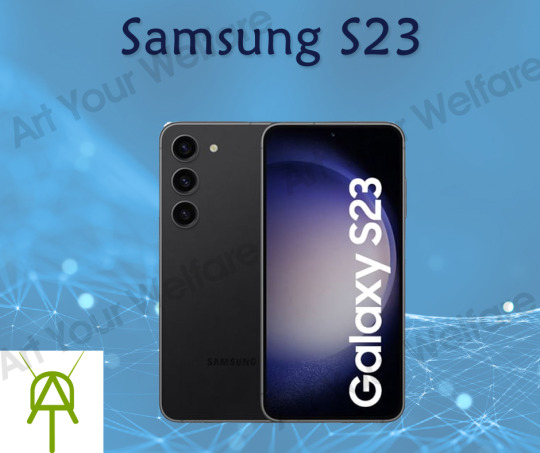
Samsung S23 is a high-end smartphone released in the market in 2023. The Samsung S23 smartphone features a sleek and modern design that is elegant and durable. It has a metal frame and glass back, which gives it a premium look and feel.
The display of the Samsung S23 is one of its standout features. Samsung S23's 6.1-inch Dynamic AMOLED 2X display offers a bright and vibrant viewing experience. The screen has a 120Hz refresh rate, which makes it smooth and fluid while scrolling through the content. The Samsung S23 smartphone is powered by the latest Snapdragon 8 Gen 2 processor, one of the most powerful processors in the market.
The Samsung S23 runs on the Android 13 operating system with Samsung's One UI 5.1. The phone has several useful features, including Bixby, Samsung's virtual assistant, which allows you to perform tasks hands-free using your voice.
Samsung S23 has a triple camera setup on the back, which includes a 50MP primary camera, a 10MP telephoto camera, and a 12MP ultrawide camera. The Samsung S23 features a 12MP front camera that takes photos and videos for selfies and calls. The Samsung S23 is equipped with a large 3900mAh Li-Ion battery, providing enough power to last a full day of use. Samsung S23 supports 25W fast charging and 15W wireless charging.
https://in.pinterest.com/pin/598626975492808171/
https://www.reddit.com/user/adtechgurus/comments/1336riy/samsung_s23_review_a_comprehensive_smartphone/
0 notes
Photo
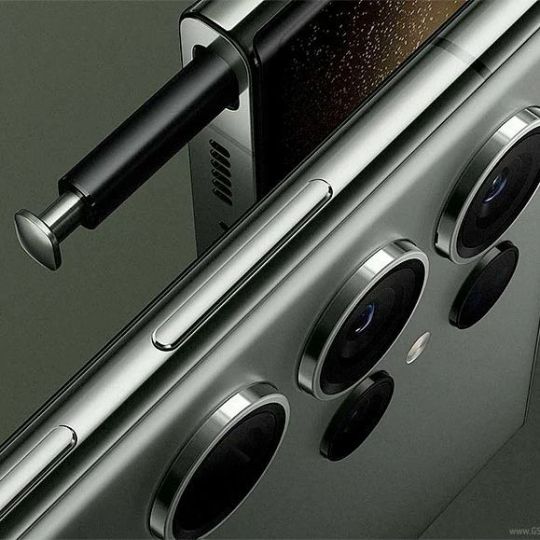
Samsung galaxy s23 ultra mobile review Visit my account @tech_trekker16 #samsung #mobile photography #mobile #samsungS23 #mobilereview #laptop review #mobilephonereview #iphone #iphonereview (at Coimbatore, Tamil Nadu) https://www.instagram.com/p/CoL_MGsvM3v/?igshid=NGJjMDIxMWI=
1 note
·
View note
Text
Lava Blaze 5G Review: An good value for the money
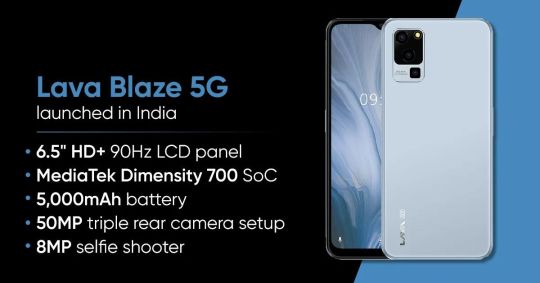
Lava used to be a famous brand of smartphones in India, but over the past couple of years, Samsung and cash-rich Chinese brands like Realme and Redmi have taken over the mainstream smartphone market. But in 2021, the Lava Z series showed that the company was returning. Last year, the company also launched the Lava Agni 5G, its first 5G phone (Review). Now that 5G is available, Lava wants to sell phones to people who want to use 5G but don't want to spend much money. The company has made the Lava Blaze 5G for people like these.
The Lava Blaze 5G is the most affordable 5G smartphone in India right now. The smartphone has a MediaTek Dimensity 700 SoC, a "glass-back design," and three cameras in one place. Should you think about buying a Lava Blaze 5G? Here's a review that will help you figure it out.
Lava Blaze 5G price in India
The Lava Blaze 5G can only buy with 4GB of RAM and 128GB of storage. When it first came out in India, it could buy it for Rs. 9,999, but it is now listed for Rs. 10,999. There are two colours for the device: Glass Blue and Glass Green.
Lava Blaze 5G design
Even though the Lava Blaze 5G is a cheap smartphone, the back is made of glass, which is pretty cool. The device is comfortable to hold, but at 207g, it does feel a bit heavy. The colour Glass Green that Lava sent us has a matte finish, too. If you like pastel colours, this should be a colour you like. The back of the phone is made of glass, but the flat frame around it is made of plastic.
Lava Blaze 5G in the colour Glass Green

Between the bottom-firing single speaker and the headphone jack is a USB Type-C port on the Lava Blaze 5G. The power button, which is also a fingerprint reader, is on the right edge. The left-side volume buttons feel good when you press them. The phone has a hybrid SIM slot, and a microSD card can add up to 1TB of storage space.
The Lava Blaze 5G has a dual-tone rectangular camera module on the back, which does not protrude as much. On the front, the Blaze 5G sports a water-drop notch at the top of the display. Even though the side and top bezels aren't too thick, the chin bezel is pretty thick, which is typical for cheap devices.
The chin bezel on the Lava Blaze 5G is pretty thick.
The Lava Blaze 5G has an HD+ resolution IPS LCD screen that is 6.5 inches in size (720x1600 pixels). The screen also has a refresh rate of 90Hz, which makes animations and scrolling smoother. Surprisingly, the angles of view are good. The screen is pretty bright; you can read it outside in the sun if you turn the brightness up. The Lava Blaze 5G has a WideVine L1 certification, but Netflix found a WideVine L3 certification on the one we tested.
Details about the Lava Blaze 5G and its software
The best thing about the Lava Blaze 5G is its name. With support for eight 5G bands, the device is currently the most affordable 5G smartphone in India and comes with a MediaTek Dimensity 700 SoC. We have seen the chipset in other budget smartphones under Rs. 15,000 in India, including the recently launched Redmi 11 Prime 5G (Review) (Review). A 5000mAh battery is also included with the phone. Even though it can charge quickly with 15W, the Blaze 5G comes with a 12W charger with two USB ports. The phone can connect to things like Wi-Fi 802.11 ac, Bluetooth 5.1, GPS, and more.
The Lava Blaze 5G runs stock Android 12
With Android 12, the Lava Blaze 5G software is clean and free of bloatware. There was no lag, and the overall experience for day-to-day tasks was quite good. The company has said that the Android 13 update will come out, but people have yet to determine when. Lava has also promised to send security updates every three months for the next two years.
Lava Blaze 5G performance and battery life
The Lava Blaze 5G did not have any problems when doing simple, day-to-day tasks. The phone did a good job, whether I was scrolling through social media or going from one app to another. RAM management was less aggressive but some heavy apps running in the background did reload when I switched back to them. Even though the phone's multitasking window showed that it had about 2GB of RAM available, this is the case.
In Geekbench's single-core and multi-core benchmark tests, the Lava Blaze 5G got 507 and 1588 points, respectively. The Redmi 11 Prime 5G, which has the same SoC, got 521 and 1757 points, respectively. The Redmi 11 Prime 5G scored 3,37,683 points on AnTuTu, much higher than the Lava Blaze 5 G score of 2,69,416 points.
I also used the Lava Blaze 5G to play a few games.
Call of Duty: Mobile took a little longer than usual to load for no apparent reason. The game supported 'Medium' graphics and 'High' frame rate settings, which resulted in an average framerate of about 40fps. The overall gaming experience was decent, but there were some stutters. If you want to play games for fun, the Lava Blaze 5G can do a good job.
At the bottom of the Lava Blaze, 5G is a USB Type-C port.
The 5000mAh battery lasted for more than a day easily, courtesy of the not-so-hungry SoC and HD+ display resolution. In our battery loop test, the Lava Blaze 5G ran for 11 hours and 56 minutes, which was surprisingly below average. With the charger that came with the phone, it took more than three hours to charge it from 0% to 100%.
The Lava Blaze 5G has a quick fingerprint scanner on the side, which is used for biometrics. It also supports AI face unlock, which, although snappy to unlock the device, is less secure than the physical scanner.
Lava Blaze 5G cameras

There are three cameras on the back of the Lava Blaze 5G. Only one of them, though, is beneficial. There is a 50-megapixel primary camera sensor, a 2-megapixel macro camera and a VGA sensor. The front camera on the phone is 8 megapixels, so you can use it to take selfies.
The Lava Blaze 5G sports a dual-tone camera module design
The primary camera on the back does an excellent job of taking photos during the day. Even though the dynamic range could be better, the sensor can still get good details. But it does tend to make colours look better. Another thing to note is that the highlights are usually blown out to get some details in the shadows. The primary camera can take good photos in low light if there is some ambient light. But because it doesn't stabilise, the images are shaky, and some details are lost.
I liked the front camera more, which captured the actual skin tone accurately. It does make the skin a little bit smoother, though. Portrait mode performance was also quite good for a phone priced at Rs. 10,999.
Lava Blaze 5G camera samples (tap to see full size)
Night mode camera sample shot on Lava Blaze 5G
The Lava Blaze 5G can record up to 2K videos using the rear camera, whereas the front camera can capture 1080p videos. Overall, the Lava Blaze 5G videos offer some boosted colours with decent details. The device also has an excellent dynamic range, which I did not expect.
Verdict
The Lava Blaze 5G gets it right regarding a budget 5G smartphone. Even though the camera is its weakest point, it gets good marks for its looks and work. While decent with actual usage, battery life underperformed in our video drain test. There are also as many as eight 5G bands on the device in India. The display is also better than average for a smartphone in this price range.
Lava's target customer for the Blaze 5G is someone who wants to try 5G without spending too much. There are some problems, but the price is so low that it's hard to complain too much.
Affiliate links may be made automatically. For more information, check out our ethics statement.
Read the full article
0 notes
Link
Samsung Galaxy Note 20 Ultra ReviewSamsung has released the Samsung Galaxy Note 20 and Note 20 Ultra under its flagship Galaxy Note series on August 21, 2020. It was officially announced in Galaxy Unpacked 2020 Event which took place on August 5, 2020.It is available in 3 different color variants:Black – Mystic BlackBronze – Mystic Bronze White – Mystic WhiteRead more by visiting our site...
1 note
·
View note
Photo

LoopWired covers technical news and product reviews. Stay with us. . . . . . . . #tech #technicalproducts #technicalproductreview #technews #loopwired #mobilereviews #laptopreviews #gadgets #reviews #techwear #techgadgets #gadgetsreview #technicalproductsreviews https://www.instagram.com/p/CCKpn9XH75N/?igshid=1ifhn9787tucl
#tech#technicalproducts#technicalproductreview#technews#loopwired#mobilereviews#laptopreviews#gadgets#reviews#techwear#techgadgets#gadgetsreview#technicalproductsreviews
1 note
·
View note
Text
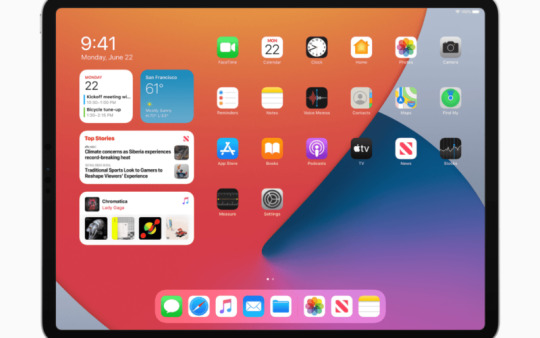
The new update of iPadOS is making people more amazing than ever. The apple music enhancement is including the new updates and softwares for the enhanced music experience. Check here:- https://phonera.in/
0 notes
Text
Samsung Galaxy A71 vs. Samsung Galaxy A71 5G: An In-Depth Comparison
Introduction
In the ever-evolving world of smartphones, Samsung continues to be a dominant player, offering a wide range of devices catering to different needs and budgets. The Samsung Galaxy A71 and the Galaxy A71 5G are two such models that have garnered significant attention. Although they share a name and several features, there are critical differences that set them apart. This blog will delve into a detailed comparison of these two models to help you make an informed decision.
Design and Build
Samsung Galaxy A71:
The Samsung Galaxy A71 boasts a sleek and modern design with a glossy plastic back that mimics glass, providing a premium look without the fragility. It features a 6.7-inch Super AMOLED Plus display with a resolution of 1080 x 2400 pixels. The phone's dimensions are 163.6 x 76.0 x 7.7 mm, and it weighs 179 grams, making it relatively light and easy to handle.
Samsung Galaxy A71 5G:
The Galaxy A71 5G shares a similar design language with its 4G counterpart, including the same display size and resolution. However, due to the additional 5G hardware, it is slightly thicker and heavier, with dimensions of 162.5 x 75.5 x 8.1 mm and a weight of 185 grams. The difference in thickness and weight is minimal, but it might be noticeable to some users.
Display
Both models feature the same 6.7-inch Super AMOLED Plus display, which offers vibrant colors, deep blacks, and excellent viewing angles. The resolution of 1080 x 2400 pixels ensures sharp and clear visuals, making both phones ideal for media consumption, gaming, and general use.
Performance and Hardware
Samsung Galaxy A71:
The Galaxy A71 is powered by the Qualcomm Snapdragon 730 processor, paired with 6GB or 8GB of RAM, depending on the variant. The Snapdragon 730 is a capable mid-range processor that handles everyday tasks, multitasking, and gaming with ease. The phone comes with 128GB of internal storage, which is expandable via a microSD card up to 1TB.
Samsung Galaxy A71 5G:
The Galaxy A71 5G, on the other hand, is equipped with the Exynos 980 processor, which includes an integrated 5G modem. This chipset is designed to offer enhanced performance and efficiency, particularly with 5G connectivity. The A71 5G also comes with 6GB or 8GB of RAM and 128GB of internal storage, expandable up to 1TB with a microSD card. The Exynos 980 provides a slight edge in performance over the Snapdragon 730, especially in 5G-enabled areas.
Camera Capabilities
Rear Cameras:
Both the Galaxy A71 and A71 5G feature a quad-camera setup on the back. The primary sensor is a 64 MP shooter with an f/1.8 aperture, capable of capturing detailed and vibrant photos. The other three sensors include a 12 MP ultrawide camera, a 5 MP macro camera, and a 5 MP depth sensor. This versatile camera setup allows for a wide range of photography options, from expansive landscapes to close-up macro shots.
Front Camera:
For selfies, both models are equipped with a 32 MP front-facing camera with an f/2.2 aperture. This high-resolution sensor ensures clear and detailed selfies, even in less-than-ideal lighting conditions.
Battery Life
Samsung Galaxy A71:
The Galaxy A71 houses a 4500 mAh battery, which is more than adequate for a full day of use under typical conditions. It supports 25W fast charging, allowing you to quickly recharge the battery and get back to using your phone.
Samsung Galaxy A71 5G:
The Galaxy A71 5G also comes with a 4500 mAh battery and supports 25W fast charging. However, due to the 5G capabilities, the battery life might be slightly shorter compared to the 4G variant, especially if you're in an area with extensive 5G coverage and are frequently using the high-speed network.
Software
Both the Galaxy A71 and A71 5G run on Samsung's One UI, which is based on Android 10 out of the box. Samsung's One UI is known for its user-friendly interface, with features like Dark Mode, Digital Wellbeing, and a host of customization options. Both devices are eligible for updates to newer versions of Android, ensuring you get the latest features and security patches.
Network Connectivity
Samsung Galaxy A71:
The Galaxy A71 supports 4G LTE networks, which are still widely available and provide sufficient speed for most users. It includes standard connectivity options such as Wi-Fi 802.11 a/b/g/n/ac, Bluetooth 5.0, NFC, and a USB Type-C port.
Samsung Galaxy A71 5G:
The standout feature of the Galaxy A71 5G is its support for 5G networks. This next-generation connectivity offers significantly faster download and upload speeds, lower latency, and a more reliable connection in densely populated areas. Aside from 5G, it also supports the same connectivity options as the 4G variant, including Wi-Fi, Bluetooth, NFC, and USB Type-C.
Price and Value
Samsung Galaxy A71:
The Galaxy A71 is priced more affordably compared to its 5G counterpart. It offers excellent value for money, especially for users who do not have immediate access to 5G networks or do not require the extra speed.
Samsung Galaxy A71 5G:
The Galaxy A71 5G is slightly more expensive due to the added cost of 5G hardware. However, if you live in an area with good 5G coverage or want to future-proof your device, the additional investment might be worthwhile.
Conclusion
In summary, the Samsung Galaxy A71 and Galaxy A71 5G are both impressive mid-range smartphones that offer excellent performance, versatile camera setups, and long battery life. The primary difference lies in the network connectivity and the processor. If you are looking for a more affordable option and do not need 5G connectivity, the Galaxy A71 is an excellent choice. However, if you want to take advantage of the latest 5G technology and slightly better performance, the Galaxy A71 5G is the way to go.
Final Thoughts
Choosing between the Samsung Galaxy A71 and the Galaxy A71 5G ultimately depends on your specific needs and budget. Both devices offer great features and performance, making them solid choices in the mid-range smartphone market. Consider your priorities, such as network connectivity, performance, and price, to make the best decision for your next smartphone purchase.
#Samsung#GalaxyA71#GalaxyA71Comparison#5GSmartphone#MidRangePhones#SamsungComparison#TechReview#SmartphoneBattle#MobileTech#AndroidPhones#5GTechnology#Snapdragon730#Exynos980#SuperAMOLED#CameraComparison#BatteryLife#TechBlog#GadgetReview#PhoneComparison#TechTrends#FutureProof#MobileReview#SamsungA71Specs#5Gvs4G#SmartphoneFeatures#TechGuide#MobilePhotography#FastCharging#PhonePerformance#SamsungFans
0 notes
Photo
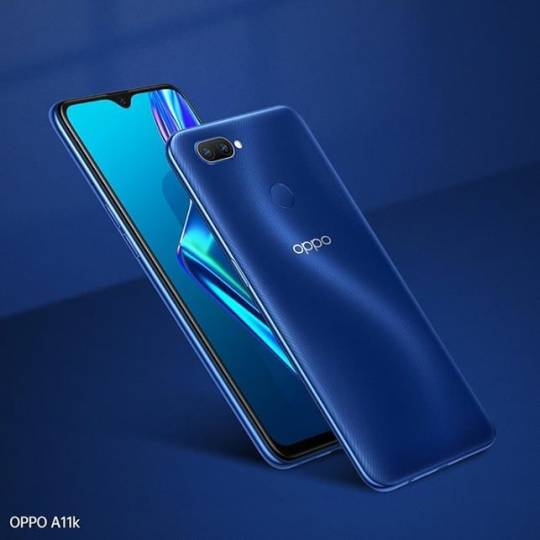
OPPO A11K🔥 Budget friendly phone waiting for you💯🙌 Link in bio💯 #oppo #oppocase #oppocharger #oppof15 #oppopakistan #oppositesattract #oppof5 #oppoa11k #mobilereviews #like4likes #likeforlikes #follow_me #followmenow #followforfollowback #followstagram #follow4followback #followfollow #followbacknow #followyourdreams #following #followersaktif #linkinmybio (at Lahore, Pakistan) https://www.instagram.com/p/CCytlmXJSvS/?igshid=1x4x7tjve5zlg
#oppo#oppocase#oppocharger#oppof15#oppopakistan#oppositesattract#oppof5#oppoa11k#mobilereviews#like4likes#likeforlikes#follow_me#followmenow#followforfollowback#followstagram#follow4followback#followfollow#followbacknow#followyourdreams#following#followersaktif#linkinmybio
0 notes
Text
youtube
In this video, we'll be comparing two of the latest smartphones in the market - the Redmi Note 12R Pro and the Tecno Camon 20 Pro. These two devices have caused quite a stir among tech enthusiasts and we'll be putting them head to head to determine which one comes out on top! The Redmi Note 12R Pro boasts a 6.8-inch IPS LCD display, powered by Qualcomm Snapdragon 750G chipset with up to 8GB of RAM and 128GB of internal storage. It also features a quad-camera setup with a 64MP primary sensor. On the other hand, the Tecno Camon 20 Pro comes with a slightly smaller 6.6-inch IPS LCD display, MediaTek Helio G90T chipset, up to 8GB of RAM and 128GB of internal storage. It sports a quad-camera setup consisting of a 64MP primary sensor. We'll be going in-depth to compare the performance, camera quality, battery life, and design of these two devices. With this information, you'll have a better understanding of which device is best suited for your needs. So, which smartphone will come out on top? Stay tuned till the end to find out! Don't forget to leave a comment below and let us know your thoughts on these smartphones.
#RedmiNote12RPro#TecnoCamon20Pro#SmartphoneComparison#TechReview#GadgetReview#CameraComparison#MobilePhotography#MobileTech#TechUpdates#PhoneArena#TechInsider#TechComparison#NewPhoneRelease#PhoneReview#MobileComparison#MobileReview#BestSmartphones#TechNews#MobileBlogger#ProductReview#Youtube
0 notes
Link
Mobile and Gadgets is a single stop solution for buying Smartphones and gadgets that perfectly fits your needs and style. What you wanna know? Every little thing is explained here about new model mobile prices, features, review on brands, accessories, electronic gadgets, technologies and more in detail.
It is an ultimate space where you get answers for all your questions and it makes the comparison, buying latest mobiles and gadgets easy.
Jump into mobilesandgadgets.in for honest suggestions and mobile reviews.
0 notes
Photo

Customers Reviews of Mobiles - See which mobile brand topped according to customer reviews. If you think another company's mobile is the best then post your review as well.
Visit here - http://bit.ly/2zq9k8A
0 notes